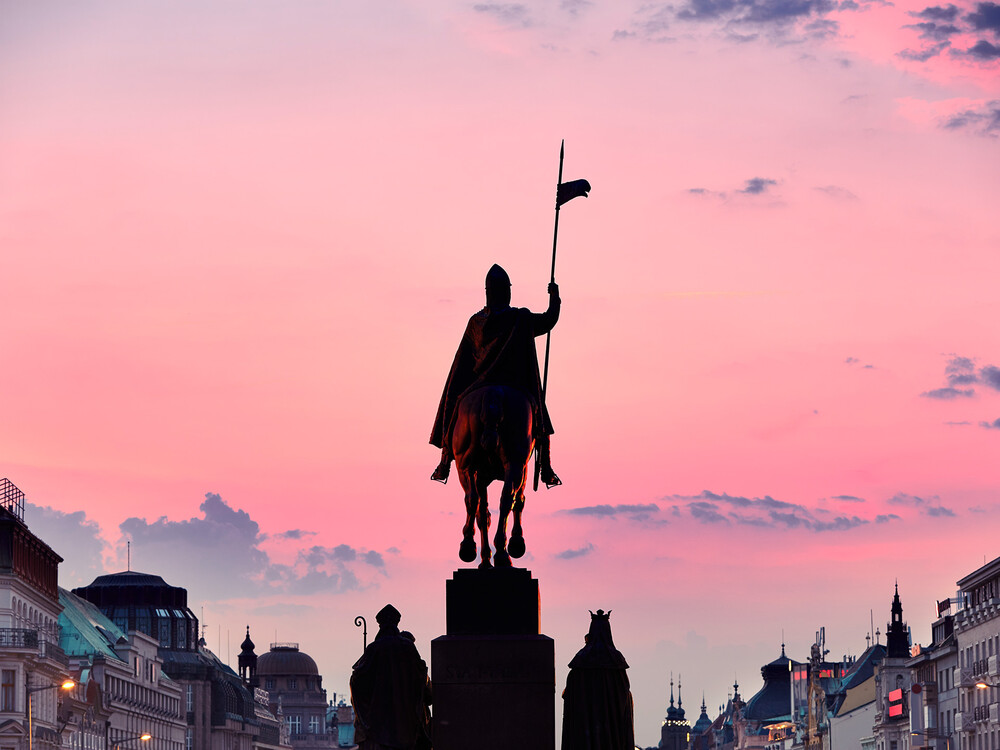1918: The Birth of the Republic Under the Duke’s Gaze
On October 28, 1918, thousands of Prague citizens rallied beneath the still-unfinished equestrian statue to celebrate the creation of independent Czechoslovakia.
Writer Alois Jirásek and priest Isidor Zahradník proclaimed sovereignty right here, forever linking the monument to the nation’s first breath of freedom.
Under Occupation and War (1939 – 1945)
The dark years of World War II turned Wenceslas Square into a stage for Nazi displays of power. In 1942 a mass rally, forced by the Reich and attended by President Emil Hácha, filled the plaza.
Three years later, during the Prague Uprising, fierce street fighting scarred the buildings around the statue as citizens rose against occupation forces.
February 1948 and the 1950s
After the Communist coup of February 1948, party leader Klement Gottwald addressed the nation from the square, while Saint Wenceslas silently watched yet another political turning point.
Through the decades of totalitarian rule, the plaza hosted official parades, but in public memory it remained a symbol of national identity - and of potential dissent.
August 1968: A Symbol of Resistance to the Invasion
During the Warsaw Pact invasion of August 1968, the monument became an impromptu headquarters of civil resistance.
Czechs draped it with anti-Soviet slogans, posters and flags, gathering beneath the horse’s hooves to voice defiance despite the rumble of tanks.
Jan Palach: A Flame of Conscience at the Patron’s Feet
In January 1969, student Jan Palach set himself ablaze on the square to protest the ongoing occupation and public apathy.
The statue turned into a spontaneous shrine of flowers and candles, a stark reminder of the cost of freedom. Authorities later planted hedges in a futile attempt to prevent further assemblies.
November 1989: The Velvet Revolution and the Road to Freedom
During the Velvet Revolution, Wenceslas Square, and especially the space “u koně,” “by the horse”, became the epicenter of daily mass demonstrations.
Hundreds of thousands demanded democracy, and the bronze duke silently witnessed the peaceful fall of communism and the return of civil liberties.
The Monument Today: Living Symbol, Meeting Point and Inspiration
Now restored, the Saint Wenceslas Monument remains Prague’s favorite rendezvous spot, a focal point for cultural events and the annual Saint Wenceslas Day prayer service.
Its aura inspires artists, from David Černý’s tongue-in-cheek upside-down horse in Lucerna Passage to countless graphic designs, while reminding locals and visitors alike of the city’s turbulent yet proud story.

